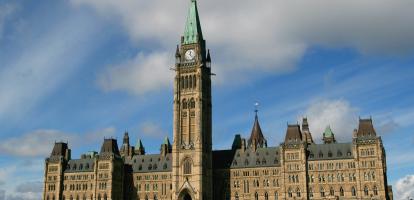It has been a full decade since the last recession, which accompanied the 2008-09 financial crisis. The global and domestic economies are at a mature stage of the economic cycle, and numerous excesses are evident. Not surprisingly, there is a recurring buzz from international and a few domestic commentators on recession risk and who will be affected. Accurately predicting is tricky but there are plenty of reasons to be concerned.
Let’s consider two key questions on the next recession. First, what will cause it? A combination of negative factors occurring in close proximity will be the most likely cause. The next Canadian recession is unlikely to be because of slamming on the monetary brakes to defeat inflation, as arguably occurred in Canada in 1982 and 1991. Canadian monetary policy is not restrictive; indeed, the next policy step may be a rate cut, not a further increase.
A more likely scenario is a recession that starts outside Canada and is eventually imported via our deep trade and investment linkages with the United States, as occurred in 2008-09. Further and sustained escalation in trade disputes among and between major trading blocs is an obvious key risk – in particular, the economic disruption being caused by the unresolved trade dispute between China and the United States. When the wolf is at the door, highlighting the risk of an all-out trade war between the U.S. and China is not just “crying wolf."
There is an added risk of one or more geopolitical external shocks, such as a tactical mistake between Iran and the United States that results in a military skirmish. An altercation like this would lead to a spike in oil prices, which is not good for growth or confidence and could spiral into something much bigger.
Heavy debt loads are being carried by many individuals and households in Canada, and by a variety of governments and businesses. Consumer and business confidence could be affected by excessive debt loads, although modest increases in interest rates have moderated the pressure.
The second key question is how ready we are to respond to a recession. A number of policy tools can be considered. Monetary policy was used both aggressively and creatively in response to the 2008-09 financial crisis. There is some latitude to cut rates in Canada to help kick-start the economy, but not as much as last time. The Bank of Canada is arguably still a few steps short of re-establishing a neutral interest rate aligned with the 2 per cent inflation target, so the capacity to cut rates would be constrained. The central bank may even need to consider more innovative monetary policy moves in a severe or sustained recession, such as a brief shift into negative nominal interest rates, or the use of quantitative easing to drive down longer-term interest rates.
Canadian capacity to provide fiscal stimulus is better than in many other countries, but also limited. Recall that governments usually drift into deficit when a recession hits because of a shock to government revenues and some automatic “stabilizers” on the spending side such as employment insurance; the key policy issue is their capacity to provide additional fiscal stimulus to boost confidence and renew growth.
The federal debt-to-GDP ratio is not high compared with that of most other major countries, at about 30 per cent of GDP, and it is on a slowly declining path. If the economy were to fall into recession, the next federal government would have fiscal room to respond, both by absorbing the impact of lower government revenues and by adding selective fiscal stimulus. Ottawa showed innovation last time when providing fiscal stimulus and can resort to short-term tax incentives as well as traditional reliance on public spending to provide stimulus and boost consumer and investor confidence. The federal public debt ratio would again shift upward into the mid-30s, as it did during the 2008-09 recession, which is affordable.
Provincial governments generally have less room to act. They are already caught in a squeeze play between slower economic and revenue growth, and relentless pressures to spend on the priority public services they deliver, notably health care, education and infrastructure. Some provinces (such as Ontario) have large deficits and still-rising debt burdens, which limits their ability to provide additional fiscal stimulus.
Canada managed the risk of financial sector contagion very well during the prior recession, unlike the United States, Britain and other countries. Regulatory oversight is strong and financial institutions generally have solid capitalization and management practices to withstand a recession.
So is Canada ready for the next recession – which is likely to be caused by global forces and therefore imported? In our view, we are in relatively better shape than many other jurisdictions to provide monetary and fiscal stimulus to kick-start growth, although fully returning to a neutral interest rate and reducing public debt burdens would further strengthen Canada’s absolute capacity to respond the next time a recession hits.
Glen Hodgson is a senior fellow at the C.D. Howe Institute.





